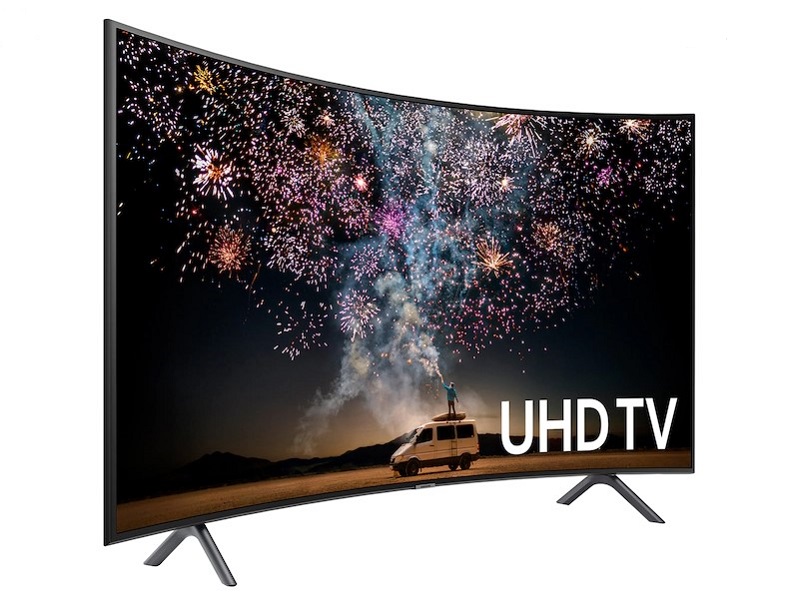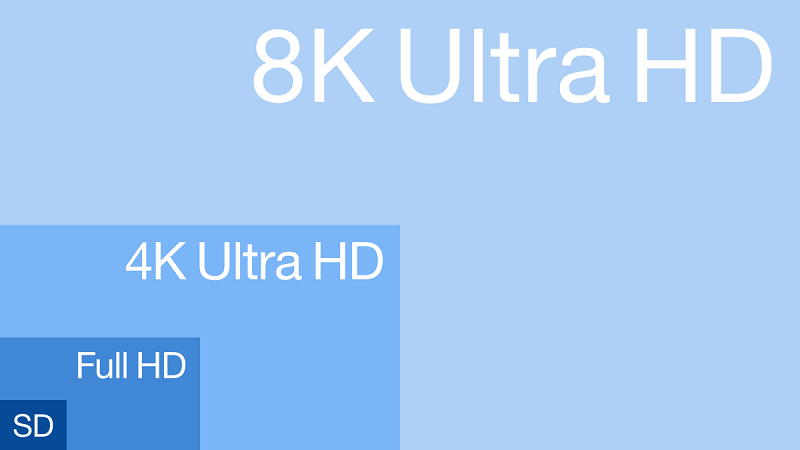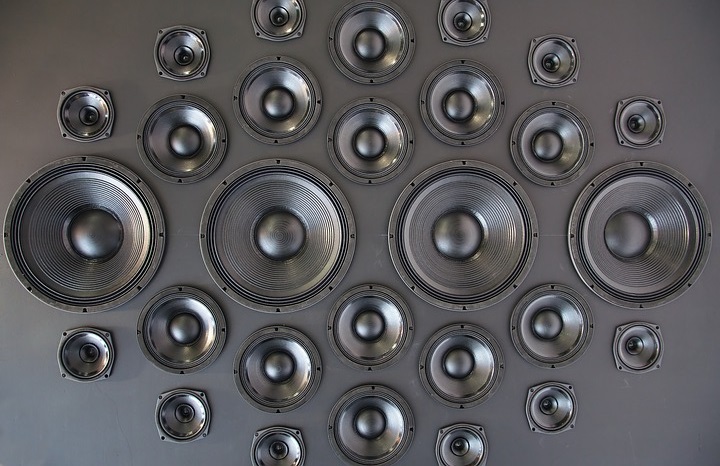The Worst AV Products of the Last Decade
AV is no different than any other hobby. We have had a slew of significant innovations, like flat-panel TVs, that have changed AV’s landscape. We have also had our fair share of products that have left us scratching our heads and asking what we were thinking? I will freely admit that I spent a lot of money on a graphical equalizer in the ’90s to have dual spectrum analyzers. Sure, I used the EQ to boost my bass. But aside from the added farty bass, all I got was pretty dancing lights. So surely we have evolved past this? Sadly, we have not. So let’s explore some of the worst AV products in the last decade (more or less)!
Curved TV’s
Ok. So you have just spent out a bunch of money on your perfect HT setup. You just found your perfect speakers; you got a smoking deal on your AV receiver (probably on Accessories4Less.com), and you have the most comfortable seats in the world. In short, it’s the ideal setup for you and your guests to watch movies. And then you add a curved TV! Curved TVs were touted as being more immersive, putting you right in the middle of the action. Hello cutting edge of AV technology!

Curved TVs are easily one of the worst AV products in the last decade. You can tell how poorly they were received by how quickly they disappeared from stores. They promised a “wrap-around” viewing experience. What did they deliver? Saying goodbye to straight horizontal lines.
That immersive experience? It isn’t impossible. As long as you sit in the precise spot where the curve is at the right angle, it can work. Unfortunately, that is often far closer to the display than anyone is likely to sit. And even if you did, your guests would have to be right up against you to enjoy that sweet spot. The issue with curved TVs is that as soon as you move away from that spot, the curve starts to become apparent. Plus, the screen starts to wash out, and you see that ghosting effect when you have reached the maximum viewing angle. Have a sectional? Put your most hated guests on the sides. They don’t deserve to see anything!
Curved computer monitors make a lot more sense based on how close we sit to them. But we are chalking curved TVs up as one of the worst (and our most hated) AV products of the decade for home theatre.
8K Anything
I know this might not be a popular opinion, but TV resolutions are bordering on ridiculous. We slowly crawled from 240p to 1080p over what seemed like forever. We sat at 1080p for a good long time and things were good. And then, in the blink of an eye, we went from 1440p to 4K UHD and then 8K in the matter of a couple of years. There are now some companies are starting to work on 16K technology! All the while, HDMI cable technology is lagging behind. We are only now seeing widespread availability of cables that will handle the bandwidth for 4K/120. Coupled with the fact that most movies are still shot in lower resolutions and then upscaled to 4k, 8k and higher seems to be a bit silly. On top of that, to benefit from that increased resolution, you need to sit very close to the panel.

Here is a question for you: Do you notice pixels on your current display? If not, increasing the resolution won’t make you notice them less! Instead, we should be worried about HDR adoption and perfection across the board. Samsung still refuses to adopt Dolby Vision forcing users to rely on HDR10 or Dynamic Tone Mapping. We don’t need more pixels. We need features like HDR that make our pictures more colorful and realistic. And if you can’t do that, how about we perfect 4k and make large-format 4k panels more affordable? I would rather have a reasonably priced 90″ 4k panel (or larger) sitting in my basement than a 65″ 8k. It would be the death-knell for projectors, but that’s a price I’m willing to pay. While 8K might not be the worst AV product of the decade, it is certainly the least needed.
TV’s That Adapt to Lighting Conditions
I will admit that when I got my first 4k TV, and it adapted to the lighting in my room, I was in awe. The concept was great. Your TV has a sensor that knows how much light is in the room and automatically gives you the best brightness based on that. Sounds wonderful. Unfortunately, real-world performance is not as great as the concept. What happens is that your TV will dim when someone walks between the TV and any light source. Having your brightness change noticeably during a movie is distracting and annoying.
Especially with HDR and Dolby Vision, you need your TV performance to be predictable and often as bright as possible. Anything that monkies with that will be detrimental to your picture quality. I know that TV manufacturers need to have this feature for ECO certification. Luckily, most, if not all, TVs can turn this off. So while I understand the concept behind TVs being adaptive to lighting, I still am adding this to the worst AV products of the last decade list. And one I always turn off.
Cramming More Speakers in Soundbars
So let me be upfront here. I am not a home theater gatekeeper. I do not fault anyone for owning a soundbar. Heck, I just tested the new Monoprice SB-500 and was pretty impressed by its performance. But (and there is always a but) I still don’t think that soundbars will ever match separates in terms of quality and fidelity. So with that said, I think that trying to turn a soundbar into a full surround sound system qualifies for one of the worst AV products of the last decade.

I think that soundbars are a great solution for challenging installations. Particularly when the only other option is to use the TV’s speakers. Soundbars can make reasonably solid 3.1 setups but mediocre 5.1 setups. Once you start adding Atmos and tons of DSP modes for phantom speakers, I draw the line. They can work, they can sound convincing, but you can’t know if it will work for you, in your room, until you try them. Better to let soundbars do what they do best – be an improvement over TV speakers. They can help you understand what is being said quite well. Stop trying to make them do everything else.
Speakers in Chairs
I may get some hate from those who own gaming chairs with built-in speakers. But in my opinion, a chair has one function – to allow me to sit comfortably! All of the reasonably priced gaming chairs with built-in speakers compromise both construction and sound quality. It’s as if the company said, “We can do one thing really well, or two things poorly.” This is why I quality gaming chairs with speakers built-in as one of the worst AV products of the last decade.
My issue is two-fold. First, we have the quality of the sound. Often, they put in tiny, poor-quality computer speakers with seriously underpowered amplifiers. They make up for their lack of volume by putting them super close to your ears. But do you know what else has small drivers that sit incredibly close to your ears? You guessed it! HEADPHONES! I would instead buy a reasonably priced chair and a reasonably priced pair of headphones and allow each to do what they were designed for.
Second, and nearly as important, is what to do if something goes wrong. What if you damage the chair? Now you need another chair that also must have speakers. If you have a problem with a single speaker, now you need a new chair? That’s an expensive purchase when you could spend much less on a set of headphones or a single speaker (to replace the one that stopped working).
Dongles
I won’t even be nice here – I HATE dongles. Even the name is terrible. Let’s take away something built into your technology and then add it back with an external device. But wait, let’s make sure you can only use one at a time, and you need lots. Worst AV product of the last decade? I would argue that it’s the worst product ever!!

I get it. There were reasons to remove the headphone jack. Most notably, it was the easiest ingress place for water and dust. I love having a phone with higher water resistance, but couldn’t there have been another solution? Couldn’t they have sealed the headphone jack in some way? Was a dongle really the only option? I know we all want to make our devices smaller or make space for larger batteries. But losing functionality is a trade-off I don’t want to make. What if own a favorite set of headphones and they use the now banned 3.5mm jack? Don’t worry. There is a dongle for that. Try not to drop it. Or imagine if you want to use your headphones AND charge your phones. Yup, there is a dongle for that (now you get to carry TWO dongles!). Most manufacturers assume we will move to wireless options, but what if you don’t have the money for that or don’t want one? As to that…
Truly Wireless Headphones
Do you know what is fun? Spending your hard-earned cash on an earbud that can fall out of your ear and seemingly disappear. I am not debating the convenience of being able to shove a set of earbuds in your ears and go for a run. I have a set for the gym and walks, and they are good enough for gym music or podcasts. But they are $30, and if I lose them or they die, I won’t be upset. Both of my daughters, despite my contestations, have bought Apple AirPods. They are slightly better, sound-wise, than my generic wireless earbuds but are 5x’s the price!
That said, the thought of shelling out $100’s for a set of truly wireless, in-ear monitors that are “audiophile-grade” is scary. I know people that have lost them. Friends that have bought their child a set that has immediately lost one. I know I’ve pulled more than my fair share of headphones out of the dryer! I’m sure there are good-sounding truly wireless headphones out there. But I’ve had these types of earphones drop out of my ear on an airplane before. Took me almost the entire flight to find it. And that’s what qualifies them for one of the worst AV products of the last decade.
Bass Heavy Headphones
So, bass-heavy headphones should be easy to qualify as one of the worst AV products of the last decade. You can make the argument that the headphones with the lowercase ‘b’ started the current headphone revolution. I’m not going to argue with you. But they just sounded SO bad. A headphone should not emphasize anything out of the box, let alone bass. That is the job of EQ. But those early ‘b’ headphones were incredibly popular and also bass-heavy. That gave us nearly a decade of enduring similar headphones. It has become so commonplace for headphone manufacturers to create a headphone that is so bass-heavy that it is, in my opinion, unlistenable. Don’t get me wrong, if that’s your jam, go for it. But I will take a hard pass.

Fortunately, we have been moving away from bass-heavy headphones in recent years. As owners have matured, so have their listening tastes. More and more headphones now come with apps that can add EQ for those that want a more bass-forward presentation. But, out of the box, headphones are presenting more and more neutral. And that’s a good thing.
Wrap Up
So there we have it. These are my choices for the worst AV products of the last decade. If I had to pick a theme for my choices, it would be products that were unnecessary and didn’t improve home theater. This is not to say that I want companies to stop taking chances. We wouldn’t get innovation or new products if companies were afraid to create the next best thing. But in these cases, there were more misses than hits!






